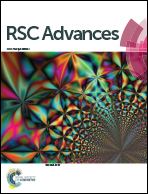A single low-cost microfabrication approach for polymethylmethacrylate, polystyrene, polycarbonate and polysulfone based microdevices
Abstract
Although polydimethylsiloxane (PDMS) is the popular choice for prototyping microdevices, it suffers from non-specific surface adsorption, small molecule partitioning and drying issues. This paper presents a single microfabrication approach to prepare different thermoplastics that improved the issues inherent to PDMS microdevices. This approach involved transferring microfluidic features from a low-cost printed circuit board (PCB) by hot embossing followed by chloroform vapour assisted bonding. The micro features on the PCB master were comprised of copper metal which maintained structural integrity under pressure and high temperature, making this single microfabrication approach compatible with polycarbonate (PC), polymethylmethacrylate (PMMA), polystyrene (PS) and polysulfone (PSU) thermoplastics. We have modified the vaporized solvent bonding method so that lower temperature and pressure were sufficient for device bonding while the risk of microchannel deformation and clogging was minimized. Various fluorescent dyes and nanoparticles were used to demonstrate the better surface adsorption and partition properties of thermoplastics when compared with the PDMS counterpart. In addition, drying issues were markedly improved in the thermoplastic microdevices. This microfabrication method provided a single and low-cost approach to prepare various thermoplastic microdevices and the entire process (from PCB master to molding and bonding) was completed within 2 hours.



 Please wait while we load your content...
Please wait while we load your content...